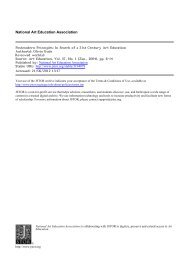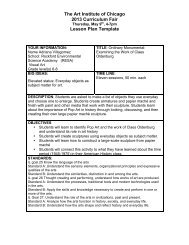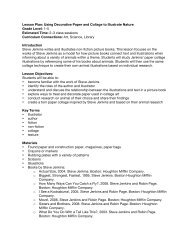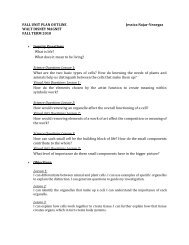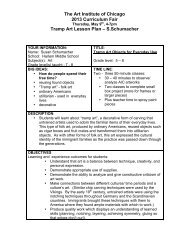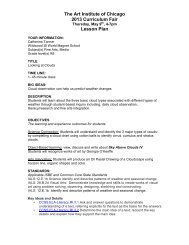Lesson 1 - LearningThroughMuseums
Lesson 1 - LearningThroughMuseums
Lesson 1 - LearningThroughMuseums
You also want an ePaper? Increase the reach of your titles
YUMPU automatically turns print PDFs into web optimized ePapers that Google loves.
<strong>Lesson</strong> 2<br />
Ocean Research organizer<br />
ILS5A: I can locate and collect information about a topic and use it to explain the topic.<br />
Research is a word that has an important word inside it: search. You will search for information about<br />
an animal that lives in the ocean. Here are some Web sites you can use to find facts.<br />
National Geographic: Environment > Oceans:<br />
http://environment.nationalgeographic.com/environment/habitats/ocean-profile.html<br />
Save Our Seas: for Kids: http://www.saveourseas.com/minisites/kids/86.html<br />
Kids.Net.Au > Encyclopedia > Atlantic Ocean:<br />
http://encyclopedia.kids.net.au/page/at/Atlantic_ocean<br />
Start your research by choosing an ocean animal to learn about. Here is a list of some ocean animals<br />
you could learn about: seal, starfish, whale, herring, dolphin, tuna, penguin, or shark.<br />
What is your animal?<br />
Search for answers to questions about the animal you selected. Here are some questions. Add more<br />
questions of your own. Then look for answers in books and on the Internet if you can use a computer.<br />
Where does the animal live?<br />
What does it eat?<br />
How does it protect itself from being caught by predators? (Animals that eat other animals are called<br />
predators.)<br />
Your questions:<br />
After you get the answers, write an Ocean Life Research Report on a separate page.<br />
After you finish your report, draw a picture of your animal.<br />
40 • <strong>Lesson</strong> 2: Oceans and Rivers ‒ Northeast Environments



